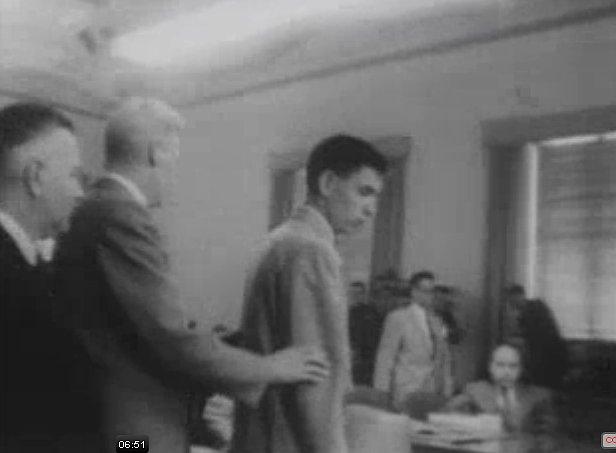
1932 - 1957
John Gilbert Graham
Summary
Name:
John Gilbert GrahamNickname:
JackYears Active:
1955Birth:
January 23, 1932Status:
ExecutedClass:
Mass MurdererVictims:
44Method:
BombingDeath:
January 11, 1957Nationality:
USA
1932 - 1957
John Gilbert Graham
Summary: Mass Murderer
Name:
John Gilbert GrahamNickname:
JackStatus:
ExecutedVictims:
44Method:
BombingNationality:
USABirth:
January 23, 1932Death:
January 11, 1957Years Active:
1955Date Convicted:
May 5, 1956bio
John Gilbert “Jack” Graham was born on January 23, 1932, in Denver, Colorado, during the depths of the Great Depression. His early life was shaped by instability and emotional abandonment. After his father died in 1937, his mother, Daisie King, placed him in an orphanage, despite later acquiring wealth through inheritance and business ventures. Even after regaining financial security, Daisie left Jack in the care of the state and did not retrieve him, a decision that would define their strained relationship for life.
Years later, in 1954, Graham reunited with his mother, who by then had become a successful restaurateur. However, the relationship was rocky. Jack had a known criminal background that included forgery and bootlegging. He was also suspected of intentionally causing an explosion at his mother’s restaurant to collect on an insurance policy. By 1955, Graham was married to Gloria Elson, and they had two young children.
murder story
On November 1, 1955, United Airlines Flight 629 — a Douglas DC-6B named Mainliner Denver — took off from Denver’s Stapleton Airfield en route to Portland, Oregon. Just minutes into the flight, a massive explosion tore through the plane. The aircraft disintegrated mid-air and crashed in Longmont, Colorado, killing all 44 people on board, including Graham’s mother, Daisie King.
Investigators discovered that Graham had placed a dynamite time bomb in his mother’s suitcase. The motive was chillingly clear: he had purchased multiple life insurance policies totaling $37,500 (worth over $440,000 today) at the airport just minutes before the flight. The device was a crude but lethal bomb, assembled at home and slipped into his mother’s luggage under the guise of sending her off to visit family in Alaska.
The crime was meticulously planned. Graham had experience with explosives and had previously staged incidents to collect insurance payouts, including a staged truck accident and the suspicious explosion at his mother's restaurant earlier that year.
After the wreckage was recovered and examined, forensic experts quickly zeroed in on a suitcase as the origin of the blast. Investigators began looking into Graham and uncovered a long trail of evidence — prior convictions, financial motive, inconsistencies in his statements, and ultimately, physical materials used to build the bomb found in his garage. He eventually confessed, though he later attempted to recant.
In his confession, Graham chillingly told investigators that the number of victims didn’t matter to him: “I realized there were about 50 or 60 people carried on a DC-6, but the number of people to be killed made no difference to me... it could have been a thousand.”
Because there was no federal law at the time making it illegal to bomb a plane, prosecutors charged Graham with the premeditated murder of his mother, which was enough to pursue the death penalty under Colorado law.

His trial in 1956 was one of the first criminal trials to be televised in the U.S. and captivated a horrified nation. The evidence was overwhelming, and though Graham’s defense team attempted to downplay his mental state, they couldn’t combat the mountain of damning facts.
On May 5, 1956, Graham was convicted and sentenced to death. After a failed suicide attempt in prison, he was placed under 24-hour surveillance until his execution in the Colorado State Penitentiary gas chamber on January 11, 1957.
His final words, reportedly, were: “Thanks, Warden.”
The bombing of Flight 629 marked one of the first instances of aviation terrorism in U.S. history, and the case helped usher in stricter security and legal changes regarding airline safety and federal jurisdiction over aviation crimes.